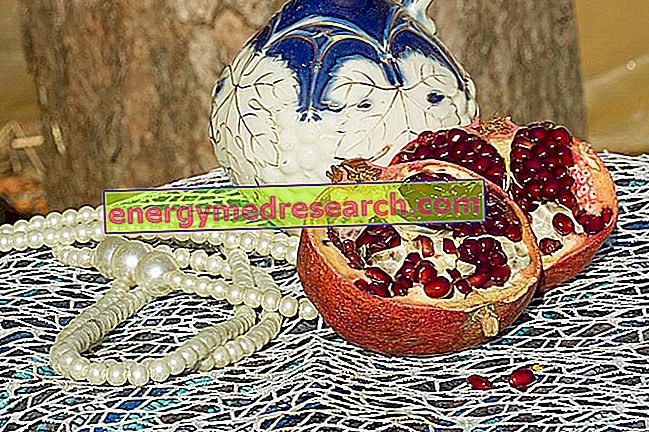
WARNING! Ayurvedic medicine is the traditional one used in India since ancient times and must be considered a different or parallel therapeutic system to that commonly accepted by the western population.
In the ancient traditional Ayurvedic medicine system, the various types of pomegranate are used from ancient times as therapeutic remedies of natural origin. NB . The pomegranates are not all the same and can be used pharmacologically differently from one another.
The main therapeutic functions of the pomegranate on the organism are summarized below, based on the interpretation of Ayurvedic medicine.
The skin of the fruit and the bark of the pomegranate tree are used as a natural remedy for diarrhea and intestinal parasites.
Seeds and juice are considered a tonic for the heart and throat; they are distinguished from each other by their bitter-astringent, sweet or sour taste, depending on the degree of ripeness of the fruit.
The pomegranate is considered a useful food to balance a diet rich in fat and sugary components (kapha or earth).
Especially ripe, the pomegranate fruit is nutritious for the systems (pitta or fire) and is considered a promoter of blood synthesis.
The astringent qualities of flower juice, peel and bark are considered valuable for a multitude of purposes, such as stopping the bleeding of the nose, gums, skin toning, firming of the sagging breast (with oil blending of mustard) and the treatment of hemorrhoids.
Pomegranate juice (of specific strains) is also used as eye drops, as it is believed to slow the development of cataracts.
Pomegranate seeds and bark are used as an oral contraceptive and abortifacient; moreover, from what is quoted in the Indian literature, the same result can be obtained using vaginal suppositories of bark.
Pomegranate extracts (alkaloids) are used to treat intestinal parasitic manifestations even in other areas of the planet.



